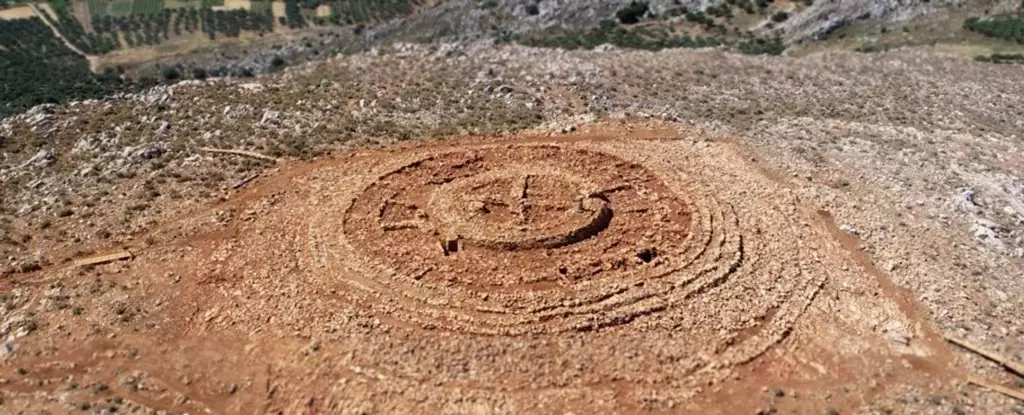Recently, archaeologists made an astonishing discovery on the Greek island of Crete. A 4,000-year-old ring-shaped stone structure was unearthed on Papoura Hill during excavation works for a major airport project. The monument, measuring 1,800 square-meters, is believed to have originated during the Bronze Age and appears to have had a ritualistic or religious purpose.
The newly found stone monument on Papoura Hill is composed of eight concentric rings of stone, with an average thickness of 1.4 meters. Some of the stones are still standing at impressive heights of up to 1.7 meters. The architects behind this structure belonged to the Minoan culture of Crete, known for their peak sanctuaries that were used in ancient rituals. However, this circular structure stands out from other Minoan sites due to its unique design and location on a hilltop.
The Greek Culture Ministry suggests that the stone monument might have been used for ritual ceremonies involving the consumption of food, wine, and offerings. This theory is supported by the discovery of a large quantity of animal bones at the site. The structure’s main period of use dates back to 2000-1700 BCE, which coincides with the Middle Minoan period when the population of Crete experienced significant growth.
The discovery of this ancient monument adds to the rich history of Crete during the Bronze Age. The island was home to the Minoan civilization, known for its advanced culture and elaborate palaces. The peak sanctuaries and ritual sites played a crucial role in Minoan society until around 1450 BCE when the Mycenaeans from the Greek mainland took control of the island.
The Kastelli airport project has led to the unveiling of at least 35 new archaeological sites in the area. The Greek Culture Ministry has assured the public that steps will be taken to ensure the protection of the stone monument on Papoura Hill. Archaeologist Lina Mendoni, the Greek Minister of Culture, emphasized the importance of completing the archaeological research of the site while safeguarding it from modern construction threats.
The discovery of the ring-shaped stone monument on the Greek island of Crete has provided valuable insights into the religious and ritual practices of the ancient Minoan civilization. As archaeologists continue to unravel the mysteries of this Bronze Age structure, it serves as a reminder of the rich history and cultural heritage of Crete. Through careful excavation and preservation efforts, we can hope to learn more about the significance of this fascinating archaeological site.

Leave a Reply